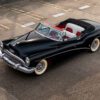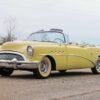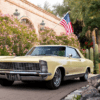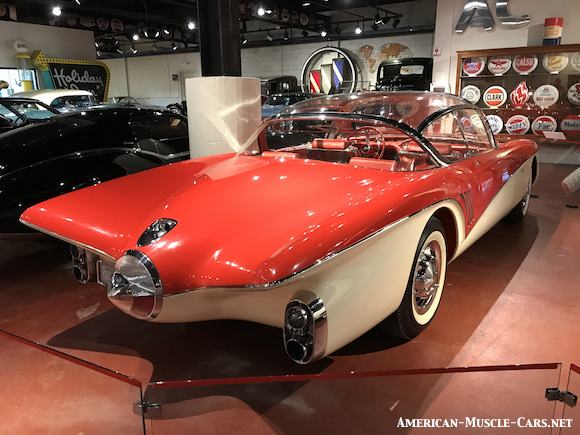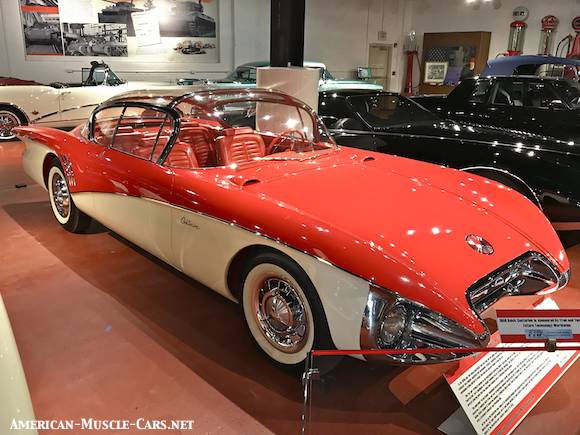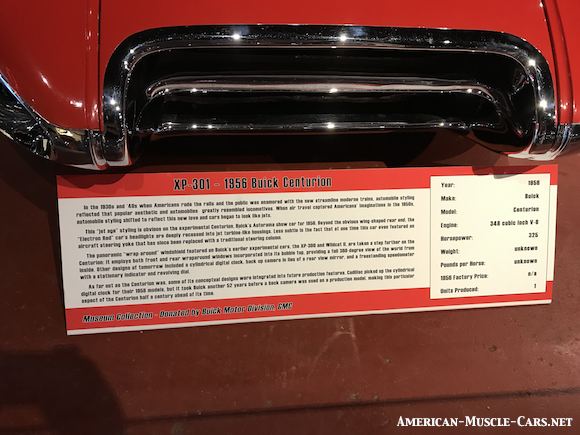1956 Buick XP301 Centurion
Buick’s 1956 GM Autorama Show Car
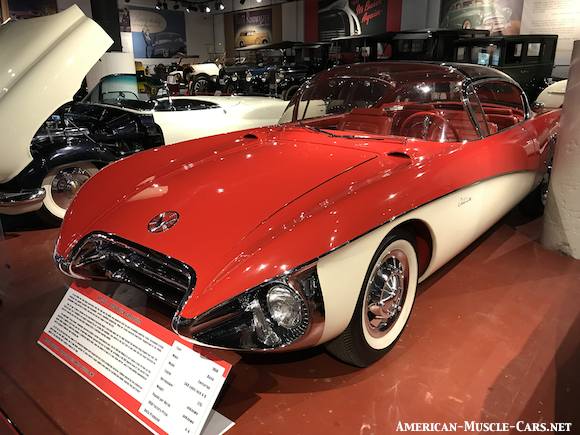
1956 Buick XP301 Centurion History
The 1956 Buick XP301 Centurion is just one in a long line of Buick ‘Concept Cars’. Buick has a long and important history in the automotive industry, along with a historical commitment to Concepts, Show Cars, and Cars of the Future. In fact, Buick was the first car company to create a Concept Car, the revolutionary 1938 Buick Y-Job. This XP301 was Buick’s 1956 entry in GM’s Motorama. These cars were intended to impress the public with Buick’s capabilities, and to draw attention to the brand. GM often crushed its concept cars to prevent the often incomplete and unroadworthy cars from falling into the hands of the public. But this one was saved, fortunately, and now sits in the Buick Gallery & Research Center Museum in Flint MI.
1956 Buick XP301 Centurion ‘Jet Age’-Styling
1950s car styling was heavily influenced by jet aircraft, and even rockets. Everyone seemed to be looking to an exciting future of flying cars. While cars weren’t really going to fly anytime soon, they sure looked like it, as they sprouted wings, fins and afterburners. The show cars were even more outspoken about it than the production cars, and this 1956 Buick XP301 Centurion concept car typifies this. With a wraparound clear lexan bubble for a roof, it looked like the canopy from a jet fighter. It would probably have cooked the occupants in actual use. The rear tail fins look very much light the vertical stabilizers on the tail of a jet. And check out that central spun aluminum cone in the center of the back. That along with the low set stacked tail light housings makes it look like a 3-engine jet. The front end hides the headlights deep inside what looks like twin jet air intakes.
AND THE SIGN SAYS…
The above sign reads: “In the 1930s and 40s when Americans rode on the rails and the public was enamored with the new streamline modern trains, automobile styling reflected that popular aesthetic and automobiles greatly resembled locomotives. When air travel captured Americans’ imaginations in the 1950s automotive styling shifted to reflect this new love and cars began to look like jets.
This ‘Jet Age’ styling is obvious on the experimental Centurion, Buick’s Autorama show car for 1956. Beyond the obvious wing-shaped rear end, the “Electro Red” car’s headlights are deeply recessed into jet turbine-like housings. Less subtle is the fact that at one time this car even featured an aircraft steering yoke that has since been replaced with a traditional steering column.
The panoramic wrap-around windshield featured on Buick’s earlier experimental cars, the XP300 and Wildcat II, are taken a step further on the Centurion: It employs both front and rear wraparound windows incorporated into its bubble top, providing a full 360-degree view of the world from inside. Other designs of tomorrow include a cylindrical digital clock, back up camera in lieu of a rear view mirror, and a free-standing speedometer with a stationary indicator and a revolving dial.
As far out as the Centurion was, some of the conceptual designs were incorporated into future production features. Cadillac picked up the cylindrical digital clock for their 1958 models, but it took Buick another 52 years before a backup camera was used in a production model, making this particular aspect of the Centurion half a century ahead of its time.”


